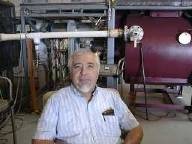
-----
CrN Stripping
I would like to find a quick way to strip CrN without damaging the underlying steel. I have tried NaOH and H2O2 with little success. Could it be due to an oxide layer?
Jason Wright- Ottawa, Ontario, Canada
2003
We have a similar problem stripping ZrN from steel. It's not the oxide -- CrN like ZrN is just very, very inert.

Jim Treglio - scwineryreview.com
PVD Consultant & Wine Lover
San Diego, California
2003
2003
Hi Jason,
I made very good experiences for stripping CrN from ferritic steel with the following method:
- electrolytical stripping (workpiece as anode)
- electrolyte: 100 - 200 g/l NaOH
- tank: uncoated mild steel
- Kathode: the tank itself can be used as Kathode
- For stripping its easier to work with voltage
- Between 4.5 and 6 Volts you should have success.
- Caution: etching aerosols! - you need an exhausting system or you should close your stripping system.
I wish you much success!
Michael HekliSwitzerland
Hi Michael,
1. By using your method of CrN stripping, do you encounter the problem of over stripping?
2. Does this method damage the carbide and high speed steels substrate if over stripping occur?
3. How do we know when to stop the process especially when the substrate with flat and sharp edge region?
Thanks
Ken
- PRC
February 14, 2012
Q, A, or Comment on THIS thread -or- Start a NEW Thread